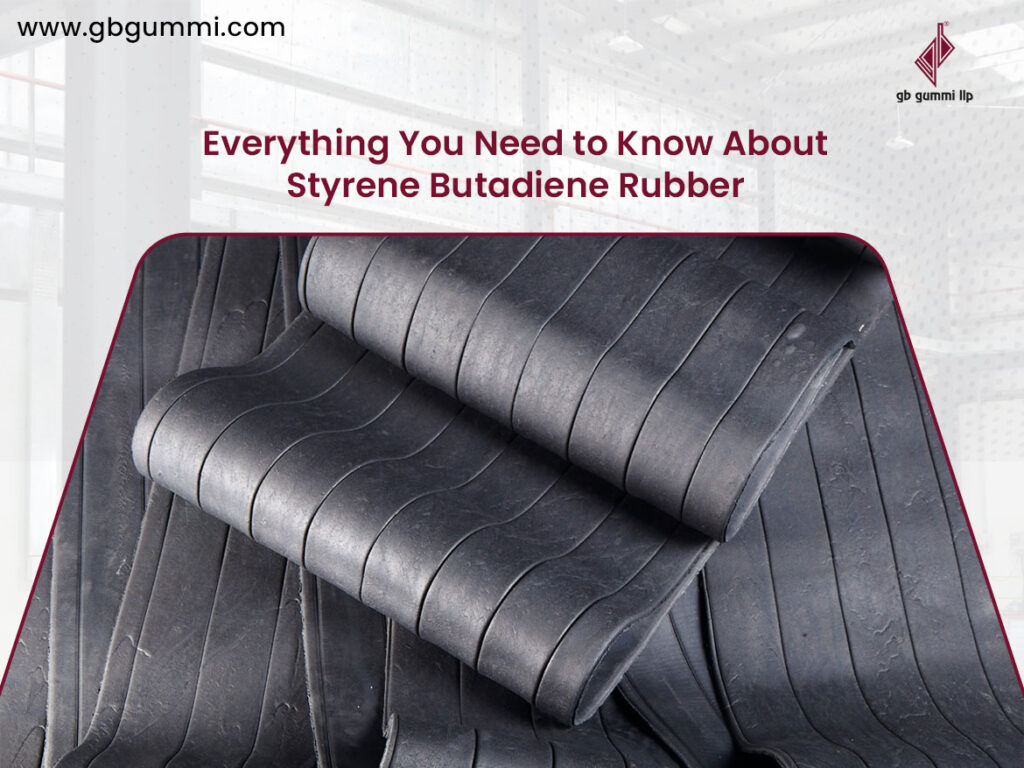Styrene Butadiene Rubber (SBR) is one of the most common synthetic rubbers used all over the world. SBR was engineered as a cost-efficient alternative to natural rubber, offering comparable performance across a wide range of applications. It is produced by polymerizing styrene and butadiene. While SBR produces materials with unique properties, its durability, flexibility, and excellent resistance to wear and tear are traits that are particularly valuable in international industrial and commercial use.
Core Characteristics of Styrene Butadiene Rubber
- SBR claims a position of preference in several industries with its balanced performance properties. Some of its attributes are:
- High Abrasion Resistance – SBR is resistant to wear; thus, it is suitable for applications in products that have consistent friction.
- Good Aging Stability – With proper formulation, SBR will maintain its performance with time.
- Heat Resistance – SBR performs well in applications that are subject to moderate heat.
- Flexibility – SBR maintains its elastic nature in some low/no temperature environments.
- Cost-Effectiveness – SBR is a cost-effective compound in comparison to many other competing rubber compounds.
Common Uses of SBR
Because of its versatile nature, SBR is used across many industries:
- Automotive
Used broadly in producing cars, tyres, conveyor belts, and vibration-damping products.
Improved grip and durability of SBR creates preferential treatment from formulators that want use SBR in tyre treads.
- Footwear
Used in many shoes specifically in the soles of shoes with an excellent abrasion resistant cushion.
- Industrial Products
Used in rubber gaskets, seals, hoses, belts requiring durability at a low-cost.
- Adhesives and Sealants
SBR are a popular polymer structure used in adhesives, coatings, and sealants.
Benefits of Styrene Butadiene Rubber
- Low Cost – Cost less than natural rubber yet provides consistent performance.
- Formulations – Styrene Butadiene Rubber can be mixed with other rubbers/minerals to achieve specific performance levels.
- Uniformity – Can be manufactured on an industrial scale with consistent performance characteristics.
- Chemical Resistance – Has resistance to mild acids/alkalis and can expand the scope of use.
Limitations to SBR
Even though SBR has a lot of versatility, it has various limitations some things to consider:
Limited resistance to oils, fuels, and strong solvents.
They perform poorly at very high temperatures compared to special rubber systems like nitrile or silicone.
Why Industries Prefer SBR
Even with its drawbacks, SBR remains one of the world’s most commonly used synthetic rubbers. SBR’s low price, performance, and versatility all combine to make it the material of choice for tyres, footwear, industrial components, and many others.
At GB Gummi, we offer a great portfolio of rubber solutions such as Styrene Butadiene Rubber products to fit the needs of numerous industries like automotive, footwear, and manufacturing.
Conclusion
Styrene Butadiene Rubber (SBR) is a flexible, sturdy and inexpensive compound that is used in tyres, footwear and many different industry products. GB Gummi has SBR products that you can count on.
Contact us today to discuss your SBR needs!

